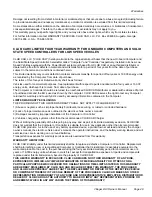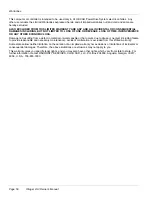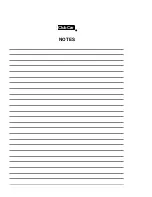
Batteries
WARNING
• Ensure battery connections are clean and properly tightened.
• Use only 4-gauge (AWG) wires with low-resistance terminals to replace battery wires.
• If battery wire terminals are damaged or corroded, replace or clean them as necessary. Failure to do
so may cause them to overheat during operation and could result in a fire, property damage, or
personal injury.
1.
Batteries should be kept clean and free of corrosion. Wash tops and terminals of batteries with a solution of
baking soda and water (1 cup baking soda (237 mL) per gallon (3.8 L) of water). Rinse solution off batteries. Do
not allow this solution to enter the battery. Be sure terminals are tight. Let the terminals dry and then spray them
with Battery Terminal Protector Spray (CC P/N 1014305).
See following NOTE.
NOTE:
Dispose of waste water properly.
2.
The electrolyte level in the batteries should be checked weekly
(Figure 14)
. Add distilled water only after charging
unless the electrolyte level is below the top of the plates. In this case, add just enough distilled water to cover the
plates, charge and then check the level again. Never charge batteries if plates are exposed above electrolyte
level. For best battery life, use only distilled water.
See following CAUTION and NOTE.
1
3
2
1. Level Indicator 2. Cap 3. Plates
Electrolyte level at least 1/2 inch (13 MM) above plates or to
level indicator.
17
Figure 14
Electric Battery Electrolyte Level
CAUTION
• Do not overfill the batteries.
NOTE:
A battery watering gun or bottle is available at many auto parts dealers.
3.
The hold-down straps should be tight enough so batteries do not move while the vehicle is in motion, but not so
tight as to crack or buckle the battery case. Tighten hold-down retaining nuts to 55 in-lb (6.2 N·m). The terminal
Page 36
Villager LSV Owner’s Manual















































